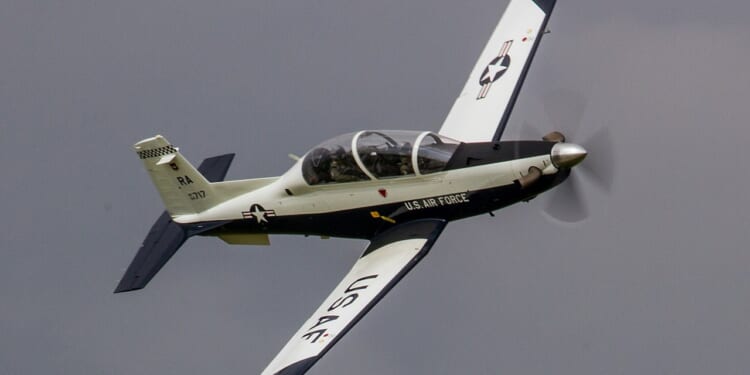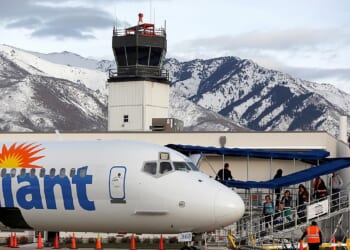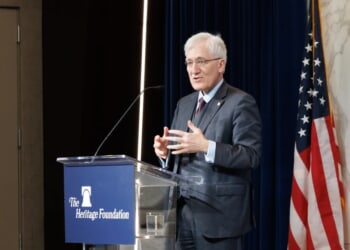The T-6 Texan is an ideal teacher’s airplane: it doesn’t coddle new students, nor does it punish them relentlessly.
For every pilot driving the US Air Force’s diverse fleet of aircraft—whether assigned to the F-22 Raptor, the U-2 Dragon Lady, or the C-17 Globemaster III—the journey to the frontlines begins through the same aircraft: the Beechcraft T-6 Texan II. Sleek, efficient, and forgiving, the T-6 has served as the primary trainer of the Air Force, Navy, and Coast Guard for more than two decades.
On paper, the T-6 looks humble, far less capable than the jets and heavies that pilots will later command. But this is exactly the point; the aircraft is an entry point for novice pilots—challenging enough to allow skill building, yet forgiving enough to absorb the inevitable mistakes.
The T-6 Texan’s Specifications
- Year Introduced: 2001 (US Air Force); also in service with US Navy, Coast Guard, and multiple allied nations
- Number Built: ~850 (all variants, including US and export)
- Length: 33 ft 4 in (10.2 m)
- Wingspan: 33 ft 5 in (10.2 m)
- Weight:
- ~6,500 lb (2,948 kg) empty
- 10,900 lb (4,940 kg) max takeoff weight
- Engines: One Pratt & Whitney Canada PT6A-68 turboprop (~1,100 shp)
- Top Speed: ~316 knots (364 mph, 586 km/h) at altitude
- Range: ~900 nautical miles (1,667 km) with external tanks
- Service Ceiling: ~31,000 ft (9,450 m)
- Loadout: Normally unarmed (trainer aircraft), but can be fitted with a centerline hardpoint for practice stores, pods, or training ordnance in some configurations
- Aircrew: 2 (student pilot and instructor)
The Texan Is the Ideal Turboprop Trainer
Powered by a Pratt & Whitney PT6A engine producing 1,100 shaft horsepower, the T-6 has a crisp and responsive feel. When a student pushes the throttle forward, the aircraft accelerates briskly; when the throttle is pulled back, the aircraft settles gently, offering a perfect balance between power and manageability.
One defining trait of the T-6 is its predictable handling. The aircraft is stable in most regimes of flight, giving beginners a wide safety margin. When approaching stalls, for example—the minimum speed at which a wing stops generating lift and the aircraft technically stops flying—the T-6 doesn’t snap violently or enter dangerous spins without warning, as most of the advanced aircraft in the US inventory do. Instead, it provides clear cues, like a slight buffet and a mushy feel in the controls. And even if the student does not react immediately to the stall cues, the aircraft is still recoverable with basic stall recovery techniques; it does not experience the unrecoverable inertia coupling that one might find in an F-104 Starfighter or another unforgiving fighter jet. If the T-6 enters a spin, the aircraft has docile spin characteristics, allowing for quick spin recovery—a lifesaver for new pilots. In effect, the T-6’s predictability teaches new pilots the importance of energy management, without subjecting them to overly dangerous conditions.
The T-6 Is Not a Gentle Airplane!
The T-6 is remarkably versatile. In Phase One of Undergraduate Pilot Training, in which the T-6 is used, students engage in basic contact flying—takeoffs, landings, and maneuvers like loops, rolls, and “Cuban eights”—and instrument navigation and formation flying. The T-6 is equipped with a modern glass cockpit complete with digital avionics similar to those found in frontline aircraft, allowing students to get acclimated to the heads-up, systems-driven environments found in fighters and bombers. But the T-6 is also equipped with an ejection seat and a pressurized cockpit—preparing students for the seriousness of the job ahead.
For many students arriving from a civilian Cessna—or nothing at all—the T-6 represents a serious step-up. Although it is a propeller plane, it is a serious aircraft: it climbs quickly, cruises at 320 knots (368 mph), and can reach 31,000 feet. The typical Cessna, by contrast, climbs slowly, cruises at 120 knots, and rarely warrants taking above 5,000 feet. Accordingly, the T-6 can feel like a speed demon.
Ultimately, the T-6 is an ideal teacher’s airplane. It doesn’t coddle new students, but neither does it punish them relentlessly. The aircraft rewards good technique and highlights mistakes while still offering a path back to stable flight.
About the Author: Harrison Kass
Harrison Kass is a senior defense and national security writer at The National Interest. Kass is an attorney and former political candidate who joined the US Air Force as a pilot trainee before being medically discharged. He focuses on military strategy, aerospace, and global security affairs. He holds a JD from the University of Oregon and a master’s in Global Journalism and International Relations from NYU.
Image: Wikimedia Commons.

















